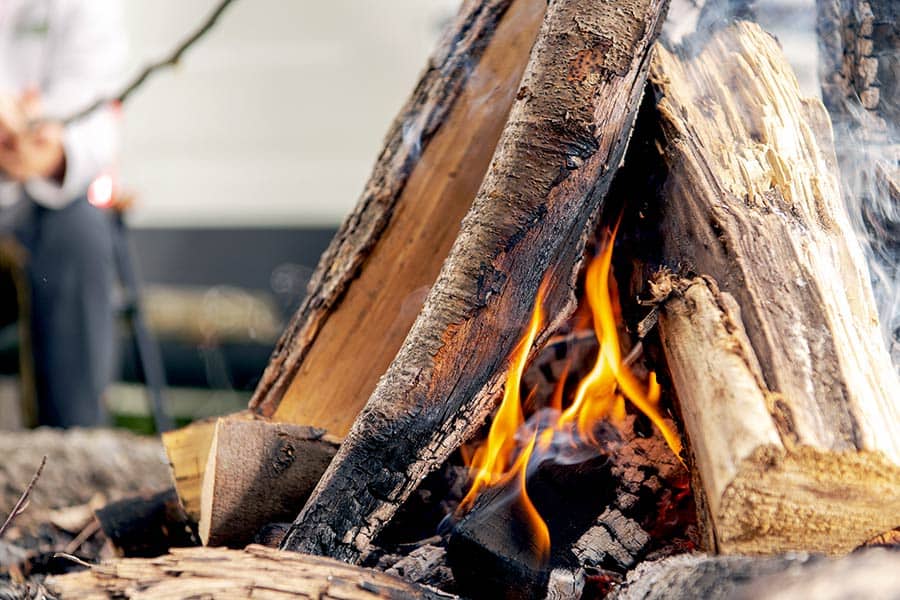
Making a campfire is an essential part of any outdoor experience. But, when done incorrectly, it can create a lot of smoke and be unpleasant for those around it.
Luckily, there are some easy tips and tricks to help you make your campfires smoke less. With the right knowledge and practice, you can enjoy your time outdoors without the overwhelming smell or irritation caused by too much smoke. So read on to learn how to make a campfire that smokes less!
1. Use Dry Firewood
One essential thing to remember while starting a campfire is to use dry and well-seasoned firewood. Wet or damp firewood is often associated with producing more smoke compared to dry firewood.
Not only does unseasoned wood produce more smoke, but it can also be challenging to light and produces less heat. Generally, seasoned wood should ideally contain a 20% or lower moisture content. This prevents excessive smoke production and allows the fire to burn more efficiently.
Choosing dry firewood ensures that your campfire produces less smoke and creates a more enjoyable environment for everyone around the fire.

2. Choose the Right Type of Wood
It’s important to keep in mind that different types of wood have varying properties, and some varieties produce more smoke than others. In particular, hardwoods such as oak, maple, and hickory tend to produce less smoke than softwoods like pine, spruce, and cedar.
So, if you’re looking to reduce the amount of smoke produced by your campfire, it’s advisable to opt for hardwoods over softwoods.
Other Posts of Interest
- 20 Ways To Cook Over A Campfire
- 31 Tips To Maximize Your Camping Cooler’s Efficiency
- 7 Van Camping Destinations To Escape Winter
- 20 Ways to Repel Bugs When Camping
3. Avoid Burning Leaves and Paper
While burning leaves and paper may seem like an easy way to get a campfire going, this should be avoided because it can produce a lot of smoke. Use dry tinder, kindling, or fire starter cubes instead to prevent this. Not only will these methods generate less smoke, but they are also easier and more effective for starting your campfire.
4. Build a Proper Fire That Allows Airflow
Building your campfire correctly can help minimize the amount of smoke it produces. Start with a small pile of tinder and kindling, then add larger wood pieces as needed.

There are different ways of constructing a campfire, but the teepee is the easiest to build. In addition, the teepee shape allows the fire to get plenty of oxygen as it can reach all parts of your fire. Making sure that there is adequate space for air circulation will help the fire burn hotter and cleaner, thus reducing smoke production.
5. Don’t Overload the Fire
To make your campfire smoke less, resist the temptation to add too much wood at a time. By adding small amounts and allowing it to burn down in between, you will decrease the amount of smoke produced. This will help keep your campfire burning cleanly and hot for longer.
Enjoy the Flames
A campfire is an excellent source of warmth and ambiance when camping. With the right preparation, you can create an enjoyable campfire that burns cleanly and hot with minimal smoke production. As long as you have dry fire building materials and the wood arranged to allow for air circulation, you can make the most of your campfire experience without excessive smoke.






